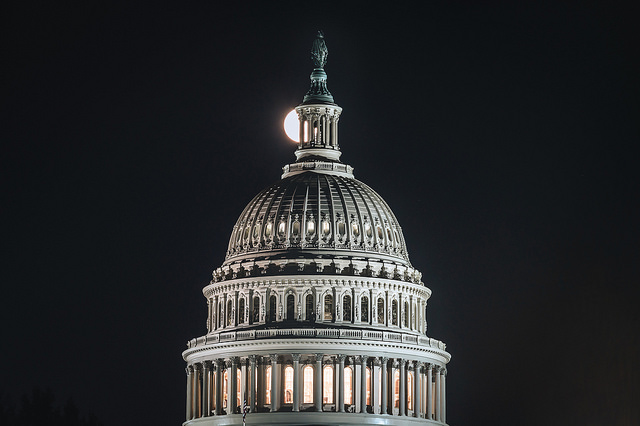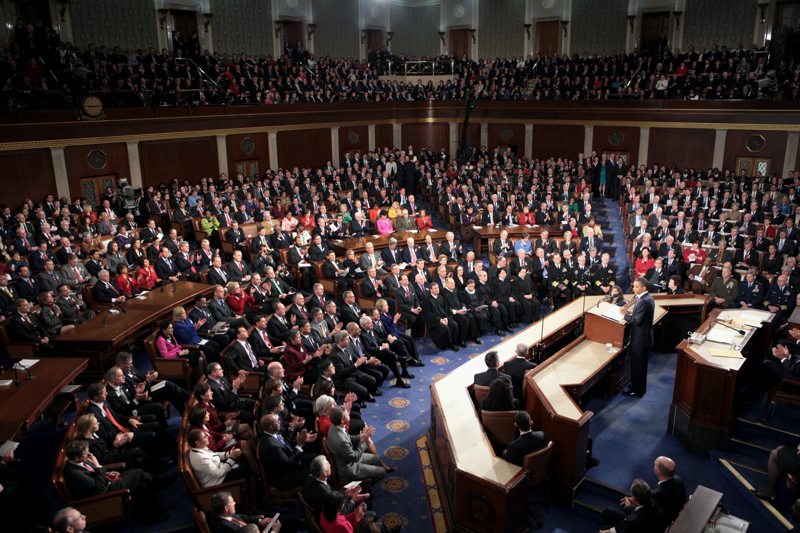US Congress takes aim at China: an update on progress of legislation

The US Congress continues to grapple with legislation aimed at empowering US competition with China. Little time remains in the 118th Congress to finalise most of the bills that congressional committees have worked on for months. Many are likely to be back on the agenda next year, in the 119th Congress, offering Australia key opportunities for deeper collaboration, particularly in the Indo-Pacific and on economic security.
When Congress returned from its summer recess on 9 September, Republican House Speaker Mike Johnson introduced a 28-bill package to bolster the US’s China policy.
Of the 25 bills that the House passed in what was dubbed ‘China Week’, 20 advanced with broad Democratic support, including legislation to refine US export controls, safeguard critical technology, ensure continued US focus on the Pacific islands, promote secure technology use and reduce US reliance on resources from China.
House Republicans also passed bills pursuing an America First agenda, overcoming strong Democratic opposition. These included the bill for the Protect America’s Innovation and Economic Security from CCP Act, which seeks to reinstate the controversial China Initiative, abandoned by the Biden administration in 2022 due to concerns of racial profiling. Democrats also opposed measures targeting Chinese electric vehicles and foreign acquisition of US farmland, arguing the legislation would harm the US economy.
During China Week, the Speaker chose not to introduce several other bills with bipartisan support, notably those developed by the House Select Committee on Strategic Competition Between the United States and the Chinese Communist Party. Senior Democrats complained that Republicans, by focusing on partisan politics ahead of a tight November election, had missed an opportunity to confront the threat from China. Representative Raja Krishnamoorthi, the lead Democrat on the committee, said only the Chinese Communist Party would benefit from this discord.
The Senate has also been working on a collection of bills relating to China, first announced by Senate Majority Leader Chuck Schumer, the lead Democrat in the Senate, in May 2023. Recent legislation passed by the Senate includes the bill for the Intergovernmental Critical Minerals Task Force Act, which seeks to diversify US critical minerals supply chains away from China in favour of the US and its allies, and a bill forcing TikTok’s Chinese parent company to sell the social media platform to a US-approved firm. After intense cooperation in the House and Senate, President Biden signed the TikTok bill into law in April this year.
Improving US economic security levers through a more holistic legislative package has been at the forefront of the Senate’s policy agenda. However, partisan differences over how best to address the China threat have made reaching a compromise difficult.
Unwilling to wait and emboldened by their expectation of being in the majority next Congress, Senate Republicans in September introduced the bill for the STRATEGIC Act, a 378-page package of cross-jurisdictional proposals to tackle competition with China. The bill seeks to strengthen the US’s ability to counter China’s Belt and Road Initiative, prevent Chinese malign influence and interference domestically, and deepen security alliances in the Indo-Pacific.
House and Senate members have now left Washington DC for campaigning. When they return after the 5 November election, the 118th Congress will have only five weeks left. Congress will need to prioritise must-pass legislation, such as the annual defence and budget bills. This will leave little or no opportunity in the period for further progress on a comprehensive China legislative package.
While movement on a US whole-of-government China package is stalled, both chambers remain focused on developing legislation to help the US compete with China, including in cooperation with US allies and partners. This robust effort reflects the serious thought and time being put into the US’s China policy across government, with strong input from academia, think tanks and business.
Members of Congress will take up the effort again when the 119th Congress is formed in January 2025 and seek to reach consensus on a package of China-focused bills. The bills that have bipartisan support in both chambers have the best chance of being signed into law.
Of particular interest for Australia will be those bills seeking to tighten and make more transparent the export control processes of the US Department of State and Department of Commerce, to streamline cooperation with allies’ defence industries. Efforts to address loopholes in the Foreign Agents Registration Act will also be important as the US seeks to better combat foreign malign influence.
House and Senate bills up for consideration addressing diversification of critical mineral supply chains, including for semiconductors, also present opportunities for Australia to deepen economic partnership with the US. These are in provisions through which the US would prioritise trusted international partnerships for supply chain security. Specifically, Australia could benefit from initiatives proposed by the House to work with allies ‘to develop advanced mining, refining, separation and processing technologies’.
Additionally, the Senate legislation includes provisions to issue awards to eligible entities—specifically allies—to ‘accelerate innovation to advance critical minerals mining, recycling and reclamation strategies and technologies for the purposes of eliminating national reliance on minerals and mineral materials that are subject to supply disruptions’.
Some bills introduced in Congress prioritise US engagement and investment in the Indo-Pacific.
The Pacific Partnership Act would mandate the development of a rolling US Pacific strategy, ongoing consultation with Australia and other Pacific partners, and diplomatic recognition for the Pacific Islands Forum. The TIDES Act would offer new tools to the US government to sanction Chinese business and other entities involved in China’s grey zone harassment of US partners in the South China Sea. The Strengthening the Quad Act would allocate more resources to support US engagement within the Quad, bolstering its partnership with Australia, India, and Japan. These measures are intended to promote economic growth, cooperation on technology and energy innovation, and resilient supply chains.




